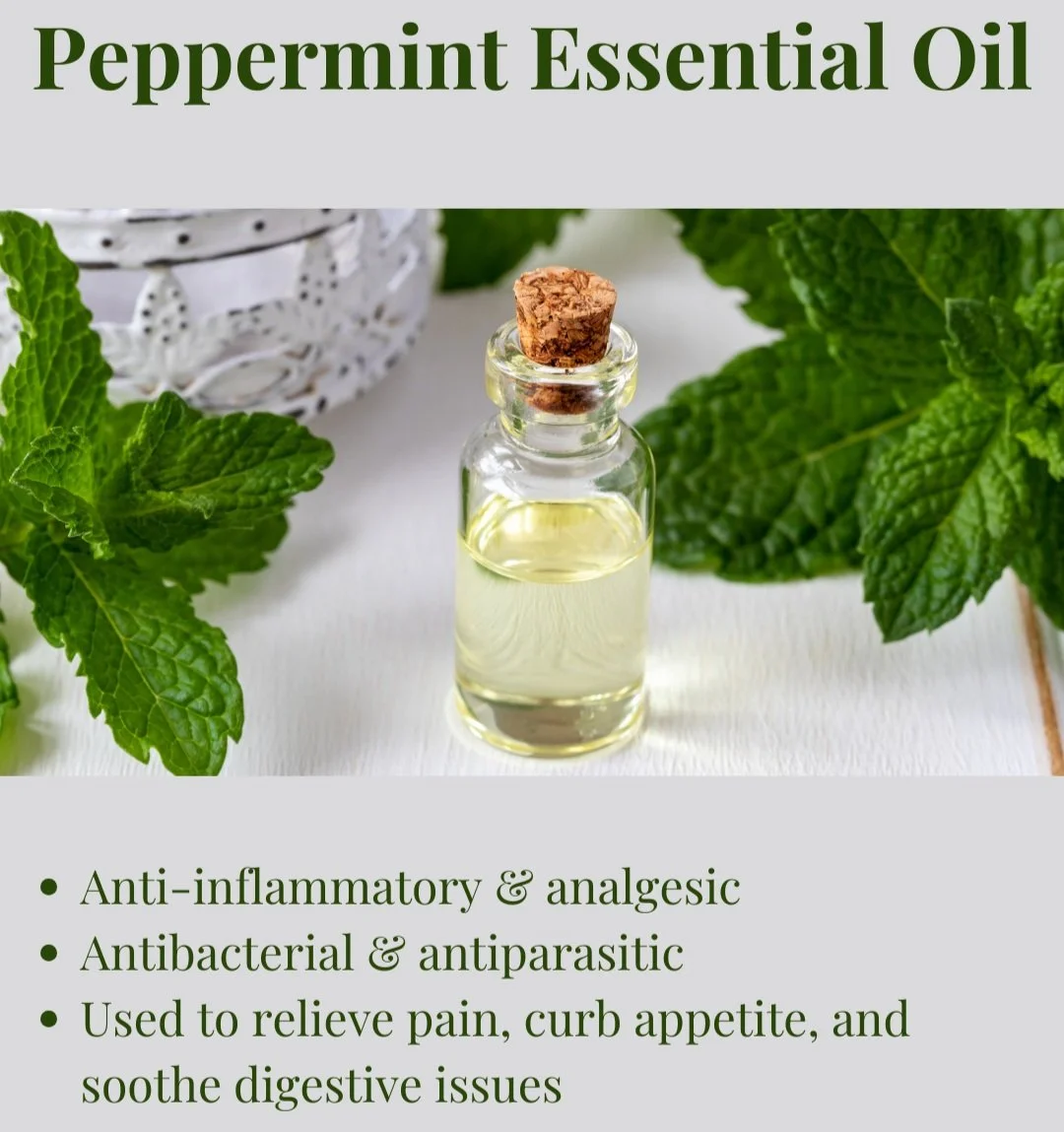Peppermint Essential Oil
Peppermint is just one of many mint plant varieties. The one we’re focusing on in this blog is Mentha piperita, a hybrid variety cultivated in England before the 17th century and now grown and used around the world. Peppermint essential oil is the last “single” essential oil used in the Raindrop Technique–other oils used are blends containing many different essential oils. Like the other essential oils, peppermint is applied to the soles of the feet and to the back.
The Nerdy Stuff
As mentioned above, peppermint’s Latin name is Mentha piperita. It shares the same botanical family as Oregano, Thyme, Basil, and Marjoram: Lamiaceae. This particular variety originated in England but is now cultivated around the world and could come from any number of countries. The essential oil is extracted from steam distillation of the leaves and stems. Peppermint essential oil’s primary constituents are:
Menthol (29-48%)
Menthol has a distinct mint taste and aroma and famously creates a cooling sensation when applied to the skin. It produces a local anesthetic effect, making it great for relieving pain. (https://onlinelibrary.wiley.com/doi/10.1111/jcpt.12679)
Menthone (12-44%)
A monoterpene, menthone is used to treat inflammatory diseases and has antioxidant, anti-allergy, anti-infective, and neuroprotective properties. (https://www.sciencedirect.com/topics/medicine-and-dentistry/menthone)
Limonene
Extensively studied, limonene has anti-inflammatory, antioxidant, anticancer, antidiabetic, antiviral, and antinociceptive (inhibits pain detection) properties as well as gastroprotective effects. (https://pubmed.ncbi.nlm.nih.gov/29427589/)
1,8-Cineole, aka Eucalyptol
Eucalyptol has antimicrobial and antiviral properties, and is anti-inflammatory, an antioxidant, and an analgesic. It has also been used to treat respiratory disorders, including chronic obstructive pulmonary disease, asthma, and more. (https://www.sciencedirect.com/science/article/pii/S0753332223012659)
Isomenthone
This is closely related to menthone and has a fresh, aromatic, herbal fragrance used in food flavoring and fragrance industries. (https://pubchem.ncbi.nlm.nih.gov/compound/Isomenthone)
Neomenthol
A stereoisomer of menthol, neomenthol has similar properties and is used as a flavoring agent, and for its cooling effects. It has also shown promise towards delaying growth of skin cancer cells. (https://pmc.ncbi.nlm.nih.gov/articles/PMC8655237/)
Actions/Properties
Peppermint has been used since ancient times to relieve digestive and respiratory problems and ease pain. Like the essential oils I’ve blogged about earlier, peppermint has several medical properties:
Analgesic
Anti-inflammatory
Antimicrobial
Antipruritic (anti-itch)
Antiseptic
Antispasmodic
Antiviral
Astringent
Nervine (soothes nerves)
Gallbladder/digestive stimulant
Expectorant
Appetite suppressant
Using Peppermint Essential Oil
Generally, peppermint essential oil is very safe to use, as long as it is used in moderation. If used in its concentrated form (without diluting it), use very little and be cautious as the high menthol content may cause irritation or sensitization.
In the Raindrop Technique, I apply peppermint essential oil to the soles of the client’s feet using a light reflexology technique and to the client’s back using effleurage (light touch). This is the second to last oil applied to the back and is the last oil applied to the feet.
At home, peppermint essential oil is a wonderful staple to keep on hand for a variety of conditions. It can be applied topically (diluted, please) to treat acne, dermatitis, ringworm, and even toothache. It can also be diluted and rubbed into the muscles or joints to help relieve pain, including nerve pain. Inhaling the scent of peppermint essential oil, such as through a diffuser, can help relieve symptoms of asthma, bronchitis, sinusitis, and head colds. It can also be used to relieve headache pain, mental fatigue, nervous stress, and digestive upset such as nausea, gas, and cramps.
Additional Sources
Encyclopedia of Essential Oils: The complete guide to the use of aromatic oils in aromatherapy, herbalism, health and well-being. Julia Lawless. Thorson’s Publishing, 2012.
Essential Oils Pocket Reference (6th ed.). Life Science Products and Publishing, 2014.

